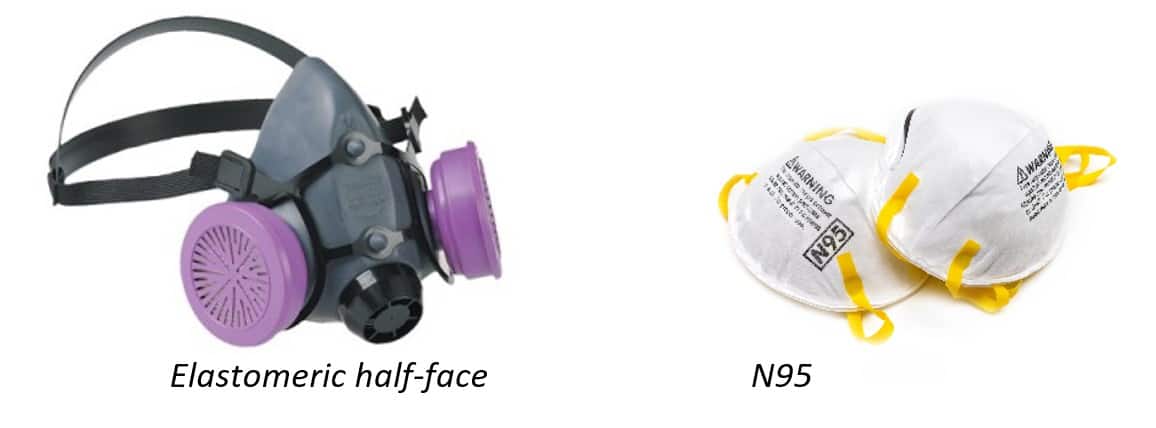Respirators became the hottest workplace accessory of 2020. And for good reason. They are designed to protect workers from potential workplace hazards, including COVID-19. At Safex, we fit tested more people in 2020 than any previous year. We helped droves of general industry and healthcare workers get medically cleared and fit tested for N95 respirators and elastomeric half-face or full-face respirators.
For everyone out there now donning respirators, we put together a summary of the most important respirator protection information.

- Medical clearances – If you are required to wear a respirator, you are also required to complete a medical clearance to make sure that the respirator is not putting too much additional stress on the body. This applies even for N95s, aka dust masks. A medical clearance is a short and confidential questionnaire that asks questions about your health history to ensure you don’t have any underlying health conditions that wearing a respirator would exacerbate.
- Fit testing – This short physical test helps to ensure the respirator is providing adequate protection. During a fit test, the person completes seven 60 second exercises while wearing the respirator to verify that there are no leaks in the seal of the respirator. A fit test must be completed for each type of mask worn. Some employees wear different masks based on the job task (last year we saw many people using multiple masks due to PPE shortages).
- Frequency of fit testing – It’s required annually to ensure the mask(s) still fits. However, due to the respirator shortage because of COVID-19, OSHA has relaxed their annual fit testing requirement for certain circumstances. Learn more here.
- Types of fit testing – There are two main ways to be fit tested—qualitatively or quantitatively. Qualitative fit testing uses one of 3 different solutions, Bitrex, Saccharin, or Isoamyl acetate, aerosolized inside an enclosure placed over the test subject’s head. The test subject wears the respirator while inside the enclosure to see if they can taste the test solution. If the wearer can taste the solution, there is a leak. Quantitative fit testing uses one of two machines, the Portacount or the Quantifit. Each respirator has a specially designed adaptor that connects the mask to the machine via tube. The Portacount compares the particles inside the mask to the particles outside the mask and gives you a fit factor. The Quantifit pulls negative pressure inside the mask, and to keep the pressure constant, it pulls out any additional air that leaks into the respirator. This measurement tells you how much air has leaked into the mask, and that leak amount is converted to a fit factor.
- Wear and tear – Respirators are subject to wear and tear, just like other personal protective equipment. You should inspect all respirators before each use, always check for cracks, stretched out straps, missing valves, mis-shaped face seals, and any other wear that could change the fit or affect the protection value of the mask. If there is any visible damage or wear, the respirator should be taken out of service and replaced. Respirators should always be stored in a bag or container that keeps dust and contaminates off the respirator and in an area that does not have excessive temperature fluctuations. Respirators should not be stored in vehicles as the temperature fluctuations will cause the elastomeric parts of the mask to degrade.
Remember, respirators provide proper protection only if all requirements are followed and they are properly taken care of. Our team is ready to help you keep workers safe and on the job.
